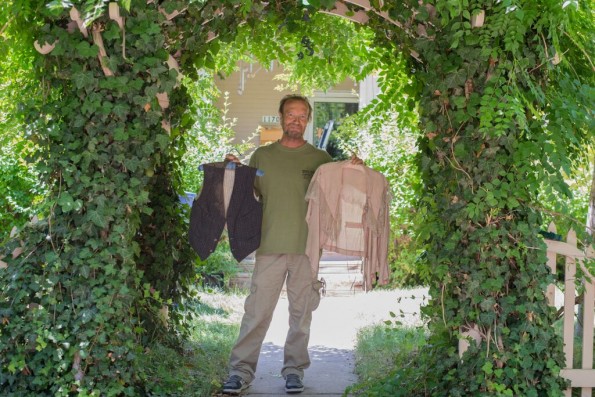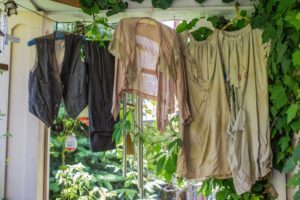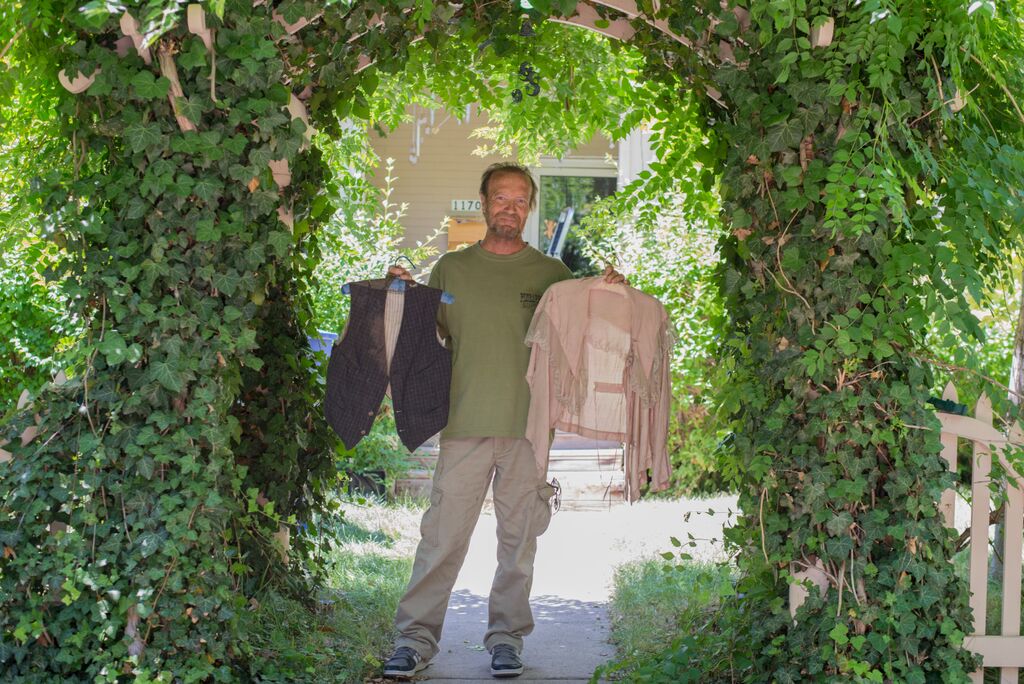
Sometimes Walls Can Talk
On a cold winter day a handful of years ago, Tom McWhorter got out his tools for a wall demo project. Tom, a self-described remodeling artist by profession, has been slowly reshaping his Lake Street home’s interior not only to upgrade its functionality, but also to add architectural interest.
He began carefully removing the original lath and plaster above a lintel supporting the wall between two rooms when he noticed something curious. “I saw these dust and soot-covered packages,” he recalls. “There were four packages, each wrapped up like a Christmas present.
When I opened the first package, I saw it was a man’s wool vest and pants, antique clothes from the late 1800s.” Placed neatly in a row in the wall space, the three other packages revealed a woman’s silk blouse, and two cotton shift dresses with initials cross-stitched just below the placket.

The conscious placing of items in the walls of homes, during or after construction, is a practice with a lengthy history but little written documentation. The Deliberately Concealed Garments Project, a UK-based organization interested in textile history and preservation and folk practices, solicits stories about clothing finds in buildings. The academically-focused group is trying to draw possible conclusions as to why people of yesteryear placed shoes and articles of clothing typically near a home’s openings such as chimneys, doors and windows.
Cory Jensen, Preservation Specialist for the State of Utah, has heard about people finding objects in the walls of their Utah homes, but acknowledges that currently there is no local body of research to explain the finds or phenomena. Conjecture points to the custom being brought here from different immigrant groups.
Tom felt like what he found was a time capsule. “You could tell that someone really went to the effort to put the clothes there. It was a whole family, and the fact that it’s clothes and not some random object makes it incredibly personal. What makes it even more interesting and valuable are the initials on the dresses. That gives names to the mystery people.”
Tom decided to dig a little deeper and, using the library’s historic Polk City Directory which lists residents’ names and addresses, Tom did a reverse search by street address to uncover the names of the homeowners.
The Lake Street house was built 1912, but by whom Tom couldn’t verify, though presumably it was the owners who he identified as William Arthur and Christine Kirk Kilpatrick Lohan. Upon further investigation, Tom learned that the Lohans’ first son, Arthur Howard, died just before his seventh birthday, from “convulsions” related to chickenpox and is buried in the City Cemetery. Possibly the youth passed at home, adding another fact to the history of Tom’s residence. The Polk directories indicate that Mr. Lohan worked for the German immigrant community’s Beobachter Publishing Co, and later was a baker at the LDS Hospital. Mrs. Lohan’s occupation was listed as “janitress” at the LDS Hospital.
“I was talking with a woman who owns an antique store and was telling her about the clothes I found,” Tom relates. “She said, ‘I can sell those for you if you want,’ but if I sold them off, I could never get the value of them back. They go with the house. They’re part of the house’s history.”






